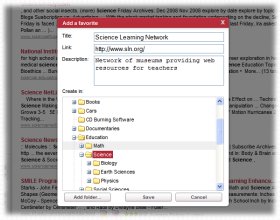|
Education
Web
Viewing 1-4 of 4 total results
Kansas Curricular Standard forReadingStd[1]_081709.doc
of sentences and has the students echo the teachers’ modeling by reading the same sentences using the same intonation and phrasing as the teacher. (f) uses Paired Reading or cross-age reading opportunities to provide practice in oral reading. This can be a reading pair between...
TO:Nonaccredited Private School Officialsreadstd5g[1]_081709.doc
to provide practice in oral reading. This can be a reading pair between a student with an adult or a student with another student. One person in the pair must be able to model good reading fluency. (c) models for students while reading aloud by using a Think Aloud strategy....
Microsoft Word - readstd1g.docreadstd1g.pdf
The second time the teacher reads the story, the teacher reads couple of sentences and has the students echo the teachers’ modeling by reading the same sentences using the same intonation and phrasing as the teacher. (f) uses Paired Reading or cross-age reading opportunities t...
1
0
The second time the teacher reads the story, the teacher reads couple of sentences and has the students echo the teachers’ modeling by reading the same sentences using the same intonation and phrasing as the teacher. (f) uses Paired Reading or cross-age reading opportunities to provide practice in oral reading. This can be a reading pair between a student with an adult or a student with another student. One person in the pair must be able to model good reading fluency. (g) allows time for
1
0
http://www.ksde.org/LinkClick.aspx?fileticket=WrChfmcJFSQ%3d&tabid=142&mid=8050&forcedownload=true#page=7
www.ksde.org/LinkClick.aspx?fileticket=WrChfmcJFSQ%3d&tabid=142&mid=8050&...
The second time the teacher reads the story, the teacher reads couple <span class="highlight">of</span> sentences and has the students echo the teachers’ modeling by reading the same sentences <span class="highlight">using</span> the same intonation and phrasing as the teacher. (f) uses Paired Reading or cross-age reading opportunities to provide practice in oral reading. This can be a reading pair between a student with an adult or a student with another student. <span class="highlight">One</span> person in the pair must be able to <span class="highlight">model</span> good reading fluency. (g) allows time for
the first row. The teacher then drew a red marble and gave it to a student in the second row. What was the theoretical probability of the simulation? Model this probability using two different representations. (see representations in MHS-S2C2-01) PO 4. Explain and use the law ...
1
0
the first row. The teacher then drew a red marble and gave it to a student in the second row. What was the theoretical probability of the simulation? Model this probability using two different representations. (see representations in MHS-S2C2-01) PO 4. Explain and use the law of large numbers (that experimental results tend to approach theoretical probabilities after a large number of trials). MHS-S5C2-05. Summarize and communicate mathematical ideas using formal and informal reasoning. The
12
0
http://www.ade.state.az.us/standards/math/Articulated08/Gradeleveldocs/MathGradeHS.pdf#page=12
www.ade.state.az.us/standards/math/Articulated08/Gradeleveldocs/MathGrade...
the first row. The teacher then drew a red marble and gave it to a student in the second row. What was the theoretical probability <span class="highlight">of</span> the simulation? <span class="highlight">Model</span> this probability <span class="highlight">using</span> two different representations. (see representations in MHS-S2C2-01) PO 4. Explain and use the law <span class="highlight">of</span> large numbers (that experimental results tend to approach theoretical probabilities after a large number <span class="highlight">of</span> trials). MHS-S5C2-05. Summarize and communicate mathematical ideas <span class="highlight">using</span> formal and informal reasoning. The
|
